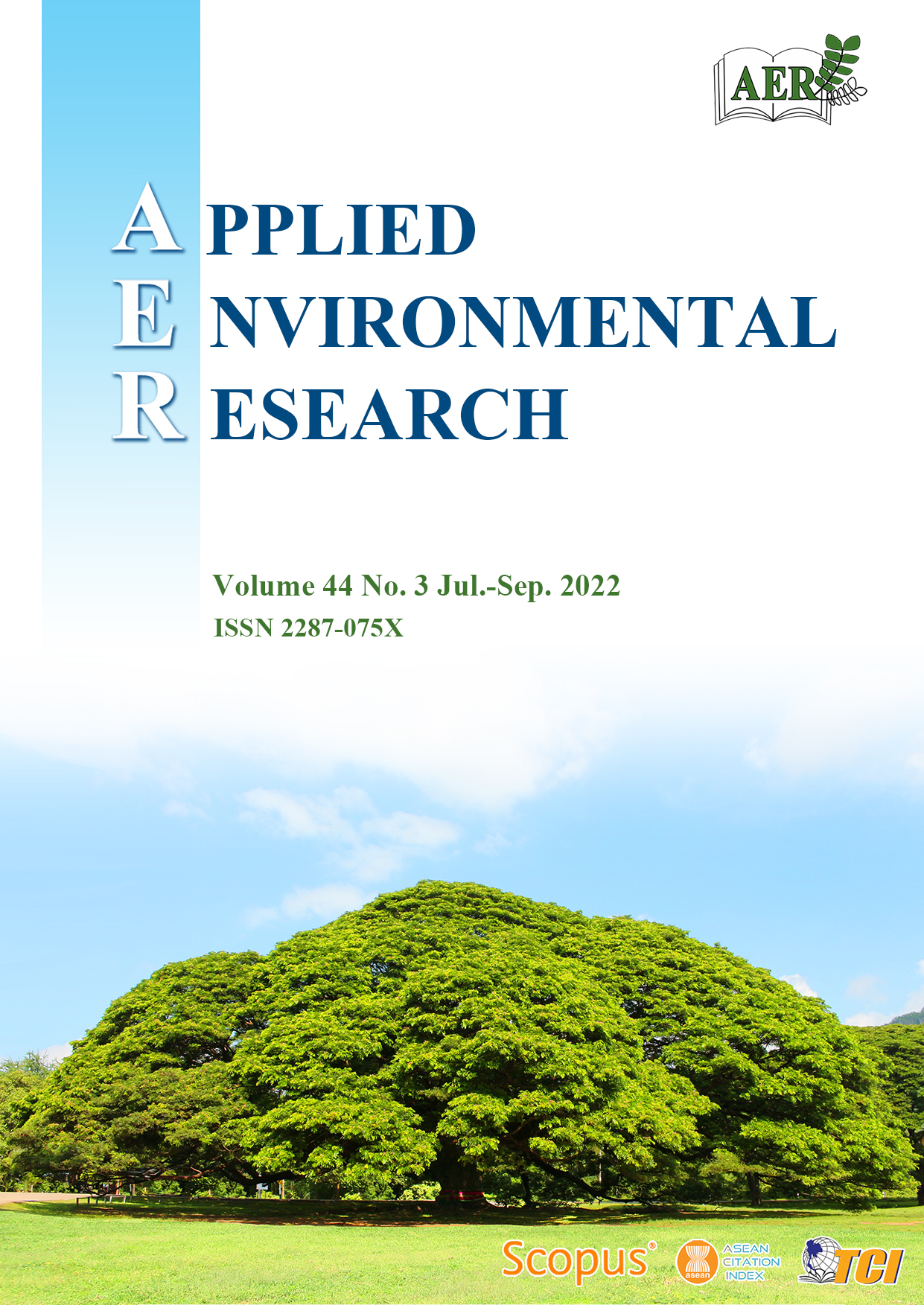Disinfection By-product Precursor Removal by Biochar Derived from Agricultural Waste
Main Article Content
Abstract
Biochar made from agricultural waste products can be used as a low-cost adsorbent targeting dissolved organic matter (DOM). In water treatment plant (WTP), DOM reacts with chlorine-based disinfectant and forms carcinogenic disinfection by-products. The objective of this study was to investigate the applicability of bamboo biochar derived from wood vinegar production waste as an adsorbent for DOM removal and subsequently trihalomethane formation potential (THM-FP) reduction. Raw biochar (BCRaw) and 800°C post-heated biochar (BC800) was tested for its surface characteristics including scanning electron microscopy, Fourier transform infrared spectroscopy and Brunauer, Emmett and Teller analysis. The post-pyrolysis treatment increased the surface area of the biochar from 90.3 to 274 m2 g-1. Raw natural water collected from Tapra WTP, Khon Kaen, Thailand, which uses the Chi River as its water source. The adsorption capacities for dissolve organic carbon at 24-h equilibrium (Qe) of BCRaw and BC800 were 0.148 and 0.551 mg-C g-1 adsorbent, respectively. The adsorption kinetics were described well with a pseudo-second order model, which implied chemisorption and multiple adsorption mechanisms. While THM-FP was relatively unaffected by a treatment with BCRaw, a treatment with BC800 resulted in 12.4% THM-FP reduction and preferential removal of precursor to chloroform over other THMs was observed. Fluorescent excitation-emission matric spectroscopy was employed to characterize DOM before and after treatment with biochar. BC800 achieved greater removal of terrestrial humic-like and fulvic-like DOM, due to the presence of oxygen functional groups, which enhances removal capacity for aromatic compounds. Overall, this study shows the potential use of bamboo biochar derived from waste material as an adsorbent for THM precursor removal.
Article Details

This work is licensed under a Creative Commons Attribution-NonCommercial 4.0 International License.
Published articles are under the copyright of the Applied Environmental Research effective when the article is accepted for publication thus granting Applied Environmental Research all rights for the work so that both parties may be protected from the consequences of unauthorized use. Partially or totally publication of an article elsewhere is possible only after the consent from the editors.

